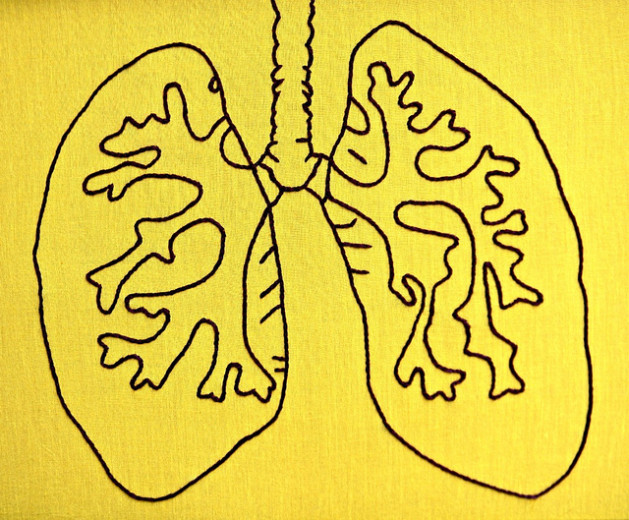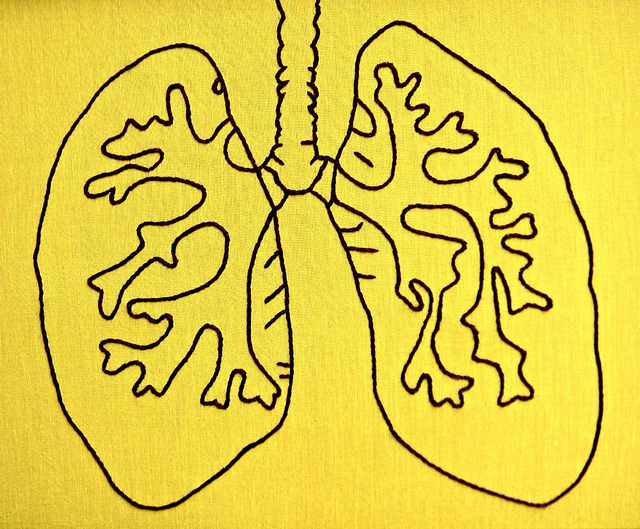
Exacerbation of COPD refers to a clinical condition featuring suddenly worsened persistent obstructive pulmonary symptoms. COPD is a group of problems manifesting with some widespread symptoms like shortness of breath, chest tightness and productive cough. When these symptoms suddenly become severe, the medical condition is termed as COPD exacerbation.
Causes and triggering components of exacerbation of COPD
Several factors give rise to exaggeration of persistent obstructive pulmonary diseases. Major causes complicating COPDs are respiratory infections due to bacterial and viral spreads, air pollution and pulmonary embolism and idiopathic initiation. In one third of these situations, the triggering elements are absent or cannot be justified. Some patients are susceptible to allergies to certain molecules and feature anaphylactic reaction which is presented as exacerbation of COPD as well.
Some patients have presented with worsened instances of COPD; after investigations failure of drug therapy turned out to be the triggering aspects in these instances. These all are prevalent difficulties that can give rise to life threatening lung incompatibilities. There are many other indefinable variables too; but they can’t be associated with any symptom and hence not included into major causes.
Signs and symptoms: how to detect instances of COPD exacerbation
COPD by itself is a group of pulmonary diseases that require tertiary level medical attention. When COPD complicates with severe symptoms, it gives rise to a life threatening medical emergency. COPD can be defined as chronic obstructive pulmonary diseases characterized by shortness of breath, chest tightness and productive cough with sputum. Emphysema and persistent bronchitis are regarded as COPDs. In scenarios of COPD exacerbation, these symptoms turn into severe medical features. So the signs and symptoms can be detailed as:
- Acute shortness of breath with noisy breathing sounds and chest breathing
- Increased level of anxiety, tachypnoea, rapid pulse and tachycardia
- Productive cough with sputum or hemoptysis
- Difficulty in sleeping and loss of appetite grossly
- Lack of speech; slurring of speech
- Morning or after-sleep headaches
- Swelling in the lower limbs; reduced mobility and abdominal pain or discomfort
How to prevent persistent obstructive pulmonary disease (COPD) exacerbation
Exacerbation of chronic obstructive pulmonary disease can be prevented partially. The principles of prevention refer to reducing or devastating the triggering components. Early diagnosis and treatment of respiratory infections and pulmonary embolism are effective strategies to prevent worsening of COPD symptoms.
Simultaneously, the patient must take counseling from the professionals about the other aspects present in the atmosphere and how they can manifest into acute exacerbation symptoms. The patients should be well-informed about the penalties of drug therapy-failure instances. They should know about their allergic traits, genetic anomalies and the molecules that may act as things that trigger allergies to their immune programs. Exposure to polluted air is one of the major reasons of complicated COPDs in developing countries. Hence, making certain a pure air-atmosphere should also be taken under consideration.
Preventing Exacerbation of COPD
- Passive immunization modules or annual flu and pneumonia vaccines (are also known as flu shots)
- Maintaining correct sanitation, handwashing etc
- Observeing well balanced diet charts precisely, doing normal physical exercises or activities and sleeping
- Sustaining a healthy, neat and clear home natural environment; Keeping away from crowds, stop smoking etc.
How COPD exacerbation circumstances are treated: the Effective Methods
Various treatment methods are being used to manage acute COPD related medical emergencies. In cases of exacerbation of COPD, the basic define of treatment can be presented as:
Oxygen therapy: The therapy requires infusing high flow oxygen to the patient. Saturation of oxygen should be more than 90 percent for better management outcomes
Steroids therapy: Glucocorticosteroids are provided to the patient in oral, Intravenous or inhaled form. Steroids are thought of as life savers in instances of inflammation. Pulmonary problems respond almost instantly to steroidal therapies.
Antibiotics: If the underlying cause of exacerbation is associated with bacterial or viral infections, antibiotics must be prescribed instantly.
Bronchodilators: Bronchodilators help in breathing mechanisms. The patient is relieved and chances of shock stick toed by coma reduce significantly.
Others: Beside the major therapeutic measures, some experts provide with some supportive treatments. They often prescribe respiratory stimulants, ICU ventilator support, and palliative care after immediate medical centerization etc.
Management of COPD exacerbation Cases: Care at home and Hospitalization to Handle Emergencies
COPD cases are well managed at home after medical stick to up and conservative treatments. However worsening of the signs and symptoms require emergency medical care. That’s why specialists propose immediate hospitalization after acute attack of exacerbation of COPD. The treatments stick to the standard protocol and the patient is provided necessary support for restoration. The management procedures can be divided into two major stages:
Care offered at home: The family members should be well aware about the situation. They must know how to keep the symptoms under control and support the patient in all possible ways. At home, proper hygiene, sanitation, air clearing should be practiced for supporting the medical treatments. The patient should be kept away from any kind of air pollution, smoke or contaminants in the air. The drugs should be provided in due time. balanced diet chart (may be a separate diet chart) should be maintained. The family members should help the patient take enough rest, do regular physical exercises and sleep adequately at night.
Management of COPD exacerbation at medical center: In acute conditions, the patient is taken to the medical center instantly. A pulmonologist visit and handle the case of acute COPD conditions. They quickly start the treatment protocol. High flow oxygen is offered instantly after admission. Gradually other supportive drugs like Steroids, bronchodilators etc. are provided.
Some Statistics on Exacerbation of COPD
COPD is the third leading cause of death in the US. These issues are deemed as one major cause of death in all the formulated and developing countries.
About 25 percent of diagnosed COPD cases are seen manifesting into exacerbation. About 15 percent COPD exacerbation circumstances lead to pulmonary failure and death.
More than 30 percent of COPD exacerbation situations don’t associate any detectable cause. These instances are deemed as idiopathic.
Global initiative for Obstructive Lung Disease or GOLD for short, has been working on COPD exacerbation circumstances around the world. They have trained the medical professionals, millions of COPD patients about the sudden life threatening emergency medical condition. Lung functions are debilitated significantly in COPD exacerbation situations. Taking essential preventive measures, preserving an optimum and healthy atmosphere can safeguard the COPD patients from such lethal conditions.
http://copddisease.org/copd-stages.html
The COPD Disease Guide provides comprehensive information for COPD sufferers and their carers.
Article Source: http://EzineArticles.com/?expert=Colin_Dyer



